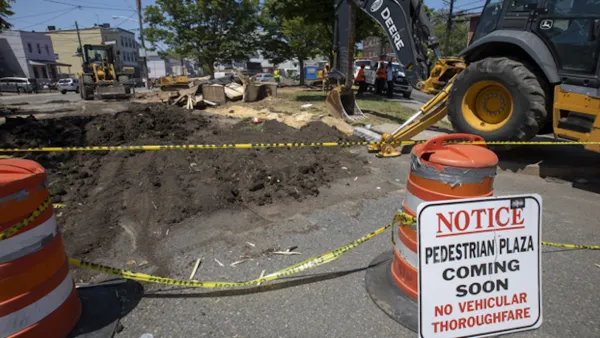In his "Dream City" column, Will Doig looks at the attributes making tactical urbanism the hot revitalization trend for municipal authorities across the country.
Although long associated with bottom-up and unsanctioned efforts to alter the urban environment, a confluence of factors have officials across the country incorporating the practices of tactical urbanism -- "that low-cost, low-commitment, incremental approach to city building" -- into their arsenal of improvement and revitalization tools.
As Doig notes, "In a way, thinking small is the next logical step in America's urban renaissance. When cities really started changing 10 or 15 years ago, the economy was booming and the Internet was a newfangled gizmo. Today, cities have less money but more ways to communicate, two conditions perfectly suited to more focused, low-cost planning. Now you can home in on a specific neighborhood (or even just a few blocks), find out what the residents there want or need, cheaply implement it on a trial basis, and make it permanent if it works."
One reason for the popularity of these nimble projects is their focus on function and program, rather than simply designing an attractive (and expensive) place and hoping that people will use it.
According to Ethan Kent, vice president of the nonprofit Project for Public Spaces (PPS), "The ‘Lighter Quicker Cheaper' method gets people focused on the uses. Typically people can't see how they can change the public realm because they feel like they're depending on big capital projects."
"But when city governments become tactical urbanists," says Doig, "it combines the best of both worlds: a space provided and sanctioned by the city, but one that the community can remake in its own image."
FULL STORY: Stop thinking big

Analysis: Cybertruck Fatality Rate Far Exceeds That of Ford Pinto
The Tesla Cybertruck was recalled seven times last year.

National Parks Layoffs Will Cause Communities to Lose Billions
Thousands of essential park workers were laid off this week, just before the busy spring break season.

Retro-silient?: America’s First “Eco-burb,” The Woodlands Turns 50
A master-planned community north of Houston offers lessons on green infrastructure and resilient design, but falls short of its founder’s lofty affordability and walkability goals.

Test News Post 1
This is a summary

Analysis: Cybertruck Fatality Rate Far Exceeds That of Ford Pinto
The Tesla Cybertruck was recalled seven times last year.

Test News Headline 46
Test for the image on the front page.
Urban Design for Planners 1: Software Tools
This six-course series explores essential urban design concepts using open source software and equips planners with the tools they need to participate fully in the urban design process.
Planning for Universal Design
Learn the tools for implementing Universal Design in planning regulations.
EMC Planning Group, Inc.
Planetizen
Planetizen
Mpact (formerly Rail~Volution)
Great Falls Development Authority, Inc.
HUDs Office of Policy Development and Research
NYU Wagner Graduate School of Public Service



























